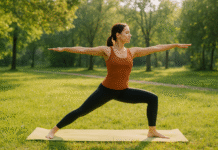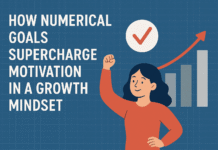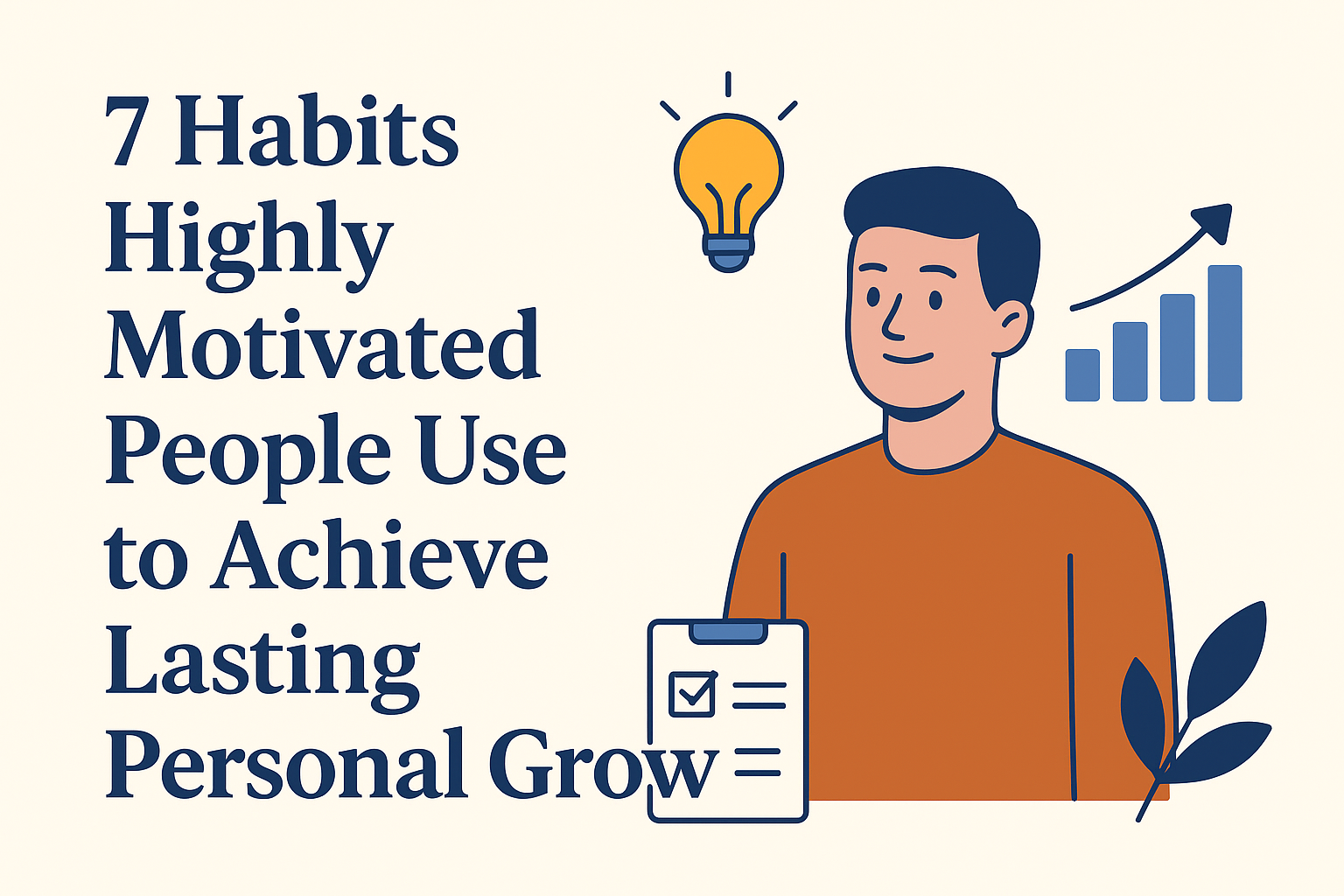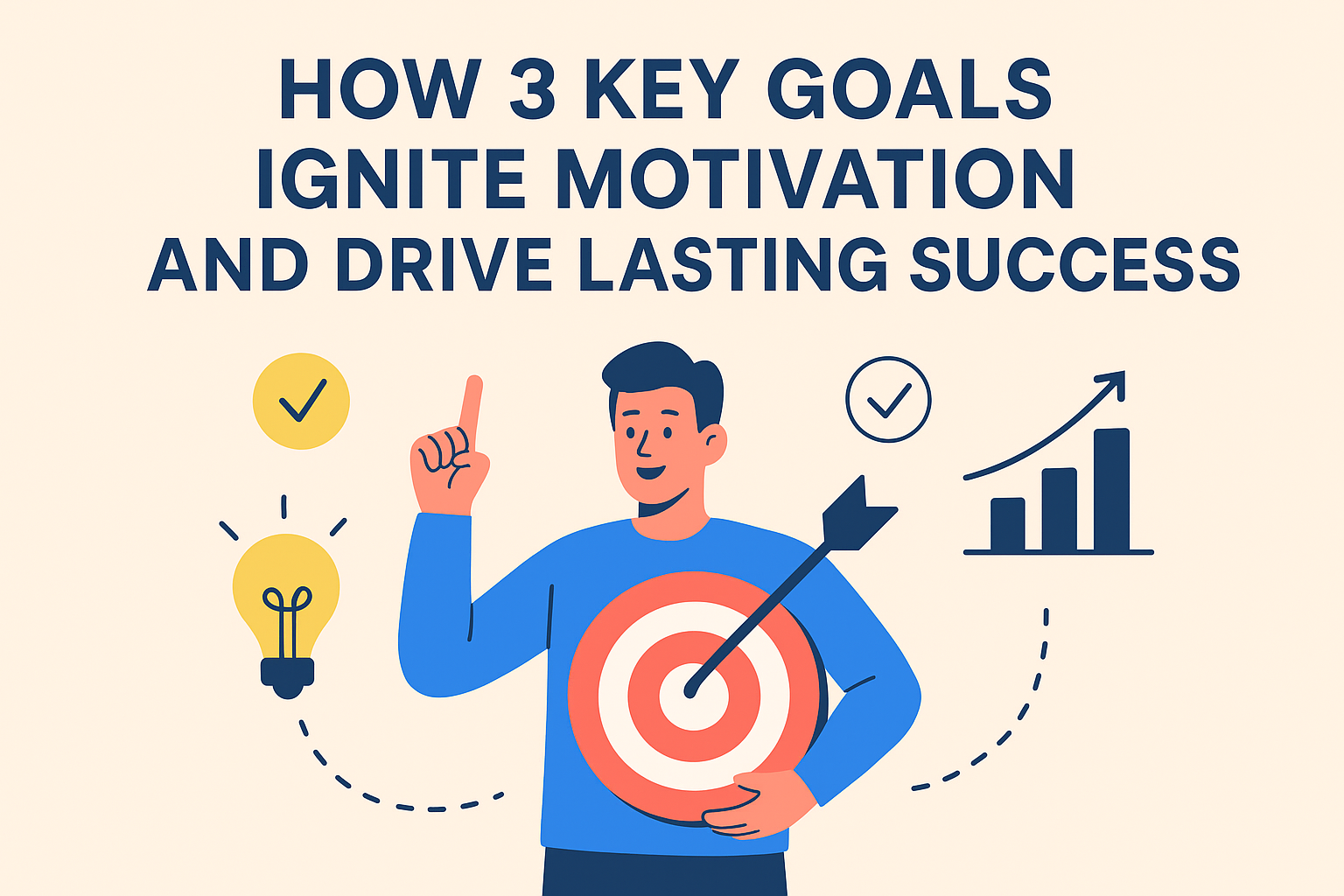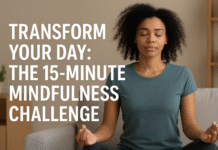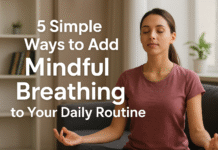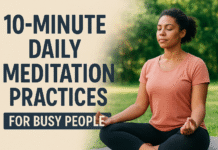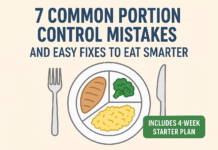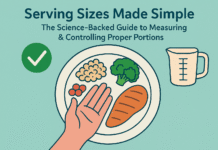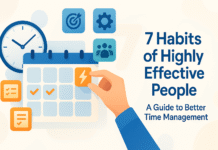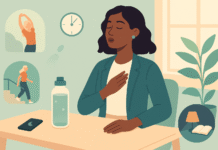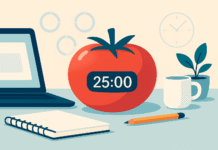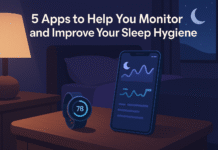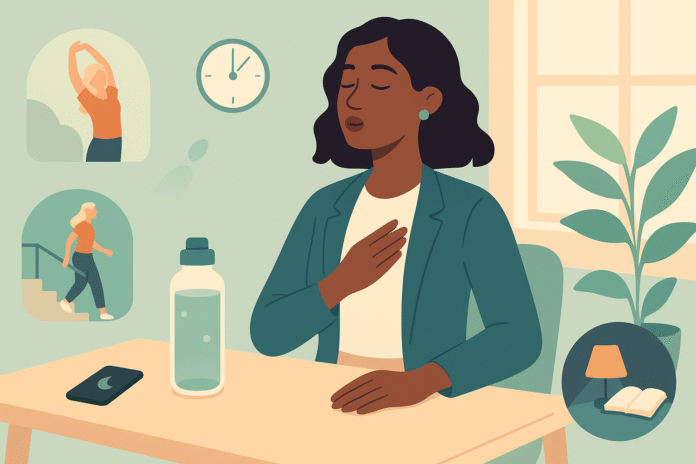Self-care doesn’t have to mean three-hour spa days or weekend retreats. When life is packed, the most effective self-care is short, repeatable, and easy to plug into the cracks of a busy schedule. In this guide, you’ll learn 10 practical, evidence-informed ways to prioritize self-care when you’re short on time—plus exactly how to do them, how often, how to scale them up or down, and how to track whether they’re working.
Note: This article offers general information for education only and isn’t a substitute for personalized advice. If you have a medical or mental health condition, talk to a qualified professional before changing your routine.
Who this is for: Busy professionals, parents, students, caregivers, founders—anyone who needs reliable, quick wins to feel better and function better.
What you’ll get: A playbook of micro-habits you can start today, troubleshooting tips, progress metrics, a 4-week plan, and a robust FAQ.
Key takeaways
- Small counts. Minutes matter; brief, consistent actions compound into meaningful benefits.
- Make it automatic. Tie tiny self-care steps to habits you already do (coffee, emails, commute).
- Track what you feel. Use simple metrics (energy, stress, sleep quality) to see what works.
- Protect the basics. Light, sleep, movement, nutrition, and connection are high-leverage.
- Scale wisely. Start at the smallest version that feels “too easy,” then progress gradually.
1) The 5-Minute Morning Reset
What it is & why it helps
A short, structured morning ritual—think one minute of breath, two minutes of mobility, and two minutes of intention—primes your nervous system, joints, and mindset for the day. Even brief breathing practices can meaningfully improve mood and calm your physiology. A consistent morning cue also helps anchor your daily routine so your other mini-habits are easier to execute.
Requirements & low-cost alternatives
- Requirements: 5 minutes, a quiet corner, optional timer.
- Nice-to-have: A mat or carpet.
- No gear? Use a wall or chair for support during mobility.
Step-by-step (5 minutes total)
- Breath (1 min): Inhale through the nose, slow exhale through the mouth; keep exhale slightly longer than inhale.
- Mobility (2 mins): Neck circles, shoulder rolls, cat-cow or seated spinal flexion/extension.
- Intention (2 mins): Name one priority (“If I only do one thing today, it’s…”) and one self-care micro-action (“I will drink a full glass of water before coffee.”).
Beginner modifications & progressions
- Easier: Do just breath + intention (2 minutes).
- Progress: Add a 1–2 minute bodyweight movement finisher (e.g., squats or wall push-ups).
Frequency/duration/metrics
- Frequency: Daily on waking.
- Metric: 1–10 “readiness” score after the reset; note if you start work calmer/focused.
Safety, caveats & common mistakes
- If you feel dizzy with breathing, sit and shorten inhales/exhales.
- Don’t turn this into a 30-minute production. Keep it quick and repeatable.
Mini-plan example
- After brushing teeth → 1 min breath, 2 mins mobility, 2 mins intention.
2) “Exercise Snacks”: Movement in 5–10 Minutes
What it is & why it helps
Short bouts of movement—climbs, squats, brisk walks—sprinkled through your day. Physical activity accumulated in any duration contributes to health and energy; interrupting long sitting with brief activity helps regulate blood sugar and boosts vigor. You don’t need a full workout to benefit.
Requirements & low-cost alternatives
- Requirements: Timer (phone), safe space to move.
- Alternatives: Stairs, hallway, resistance band, desk chair, or a short walking loop.
Step-by-step (pick one “snack”)
- 2–5 minute brisk walk right after a meeting or meal.
- Stair burst: 2–3 flights at a comfortable pace.
- Bodyweight cluster (5 minutes): 30 sec squats → 30 sec wall push-ups → 30 sec glute bridges → 30 sec marching in place; rest 60 sec; repeat.
Beginner modifications & progressions
- Easier: Chair squats, wall push-ups, slow hallway walk.
- Progress: Add a backpack for load, or do two “snacks” separated by hours.
Frequency/duration/metrics
- Frequency: 2–5 snacks per day, especially after meals and long sitting.
- Metric: Steps per day, “energy dip” count (how often you slump), and post-meal sleepiness.
Safety, caveats & common mistakes
- Warm up gently if you’re deconditioned.
- Avoid all-out efforts in office wear; aim for comfortable intensity.
Mini-plan example
- After lunch → 7-minute campus loop.
- 4 pm energy dip → 3 minutes stairs + 2 minutes stretch.
3) On-Demand Breathing: 1–3 Minutes to Reset
What it is & why it helps
Slow, deliberate breathing—especially slightly longer exhales—can reduce perceived stress and calm arousal quickly. Structured breathwork has shown meaningful improvements in mood compared with passive mindfulness for some people.
Requirements & low-cost alternatives
- Requirements: 1–3 minutes and a seat.
- Alternatives: Box breathing (4-4-4-4), or simply inhale 4, exhale 6.
Step-by-step (90-second “Exhale-Plus”)
- Inhale through the nose for 3–4 seconds.
- Exhale through the mouth for 5–6 seconds (silent or soft “hss”).
- Repeat for 12–18 breaths; notice shoulders and jaw soften.
Beginner modifications & progressions
- Easier: Start with equal counts (4 in, 4 out).
- Progress: Add a daily 5-minute practice or try a guided breath app.
Frequency/duration/metrics
- Frequency: Before high-stakes tasks, during conflict, or when you feel “on edge.”
- Metric: 1–10 stress rating before vs. after; resting respiratory rate if you track it.
Safety, caveats & common mistakes
- If you feel lightheaded, return to normal breathing and sit.
- Don’t force huge breaths—gentle and regular works best.
Mini-plan example
- Calendar alarm labeled “breathe” at 10:30 and 3:30 → 90 seconds Exhale-Plus.
4) The Desk Reset: Posture & Mobility in 2–5 Minutes
What it is & why it helps
Micro-breaks that unwind computer posture and interrupt prolonged sitting. Breaking up sitting every 30–60 minutes with light movement can improve comfort and metabolic markers after meals.
Requirements & low-cost alternatives
- Requirements: Chair, open space the size of a yoga mat.
- Alternatives: A doorway and a wall are enough.
Step-by-step (3 minutes)
- Doorway stretch (30 sec): Forearms on the frame, gentle step-through.
- Thoracic rotations (30 sec): Seated, hands across chest, twist gently.
- Hip openers (60 sec): Stand, hold chair, slow leg swings front-back, then side-side.
- Walk lap (60 sec): One hallway loop or stairs.
Beginner modifications & progressions
- Easier: Just stand, roll shoulders, gentle neck turns.
- Progress: Add a 2–3 minute brisk walk or 10 chair stands.
Frequency/duration/metrics
- Frequency: Once each hour of desk time.
- Metric: Afternoon stiffness 1–10; number of hours you sat without a break.
Safety, caveats & common mistakes
- Move within a pain-free range.
- Don’t skip breaks because you’re “in flow”—your future self pays for it.
Mini-plan example
- End of each meeting → 3-minute desk reset before you open email.
5) Tiny Sleep Anchors: Protect Your Rhythm
What it is & why it helps
Two reliable anchors—consistent wake time and a wind-down cue—help stabilize your body clock. Morning daylight and less bright light at night further support healthy sleep.
Requirements & low-cost alternatives
- Requirements: Alarm, a 15–30 minute wind-down routine, and access to morning light.
- Alternatives: If you can’t get sunlight, use a bright window; at night, dim lights and reduce screen brightness.
Step-by-step (evenings, 20–30 minutes)
- Power-down plan: Choose two calming activities (shower, light stretch, paper book).
- Dim it down: Lower overhead lights; enable Night Shift/blue-reduction on devices.
- Bedroom ready: Cool, dark, quiet; charge phone out of arm’s reach.
Beginner modifications & progressions
- Easier: Commit only to a consistent wake time for a week.
- Progress: Add morning light within an hour of waking and a 10-minute walk.
Frequency/duration/metrics
- Frequency: Daily.
- Metrics: Time in bed, sleep consistency (same wake time ±30 minutes), and next-day alertness.
Safety, caveats & common mistakes
- If insomnia persists, talk to a clinician; brief therapy for insomnia is effective.
- Don’t chase “perfect sleep” with constant tracking—aim for “good enough” consistency.
Mini-plan example
- Weeknights: 10:15 pm lights dim, 10:45 pm in bed, 6:30 am wake, 5–10 minutes outdoor light.
6) Hydration & Protein Defaults
What it is & why it helps
Mild dehydration—even ~1–2% body water loss—can affect mood, energy, and concentration. Pairing hydration with protein-forward snacks helps steady appetite and energy.
Requirements & low-cost alternatives
- Requirements: Reusable bottle (keep it in your visual field), 2–3 go-to high-protein snacks.
- Budget options: Hard-boiled eggs, Greek-style yogurt, cottage cheese, roasted chickpeas, edamame, nut butter on fruit, milk or soy milk.
Step-by-step
- Water cue: Drink a full glass before coffee/tea.
- Stock your desk/bag: Keep two protein options within reach.
- Anchor to meals: Add a protein source to breakfast and the afternoon snack.
Beginner modifications & progressions
- Easier: Start with “water before coffee” and one protein snack per day.
- Progress: Add a second bottle refill by 3 pm and prep a simple protein-rich lunch.
Frequency/duration/metrics
- Frequency: Daily.
- Metrics: Headache frequency, afternoon cravings, and subjective focus.
Safety, caveats & common mistakes
- If you have a fluid-restricted condition, follow your clinician’s guidance.
- Don’t chase extreme water targets—steady sips and urine color “pale straw” are practical.
Mini-plan example
- Bottle on desk → 1 refill by noon; 3 pm snack = yogurt + fruit or roasted chickpeas.
7) Notification Hygiene: Batch the Pings
What it is & why it helps
Constant alerts fracture attention and elevate stress. Batching notifications (checking at set times) reduces interruptions while keeping you connected.
Requirements & low-cost alternatives
- Requirements: Phone and laptop settings, calendar blocks for “check windows.”
- Alternatives: Use “Do Not Disturb” with VIP overrides.
Step-by-step
- Choose 2–3 windows to check messages (e.g., 10:30, 1:00, 4:30).
- Silence the rest: Turn off badges, banners, and sounds outside those windows.
- Create escape hatches: VIP or starred contacts bypass DND for true urgencies.
Beginner modifications & progressions
- Easier: Silence only the noisiest apps (social, shopping).
- Progress: Extend between-check intervals, add an email batch.
Frequency/duration/metrics
- Frequency: Weekdays.
- Metrics: Number of pings per hour, perceived stress after work, time to complete deep tasks.
Safety, caveats & common mistakes
- Do not block critical alerts (family/health/safety).
- Avoid “all-or-nothing” detoxes that rebound into anxiety; batch, don’t ban.
Mini-plan example
- Calendar holds at 10:30/1:00/4:30 → quick triage, zero inbox timer 10 minutes.
8) Nature & Daylight Micro-Dose
What it is & why it helps
A short dose—10–20 minutes—of daylight and/or greenery can lower stress and stabilize your daily rhythm. Even a brief outdoor break can refresh mood and attention.
Requirements & low-cost alternatives
- Requirements: Access to outdoors or a window with sky view.
- Alternatives: Sit near a window with a plant; walk a tree-lined block; listen to nature sounds if you can’t get out.
Step-by-step
- Pick a window: After lunch or mid-afternoon slump.
- Go outside: Walk or sit; put your phone away.
- Notice 3 things: Colors, sounds, and air on your skin.
Beginner modifications & progressions
- Easier: 5 minutes of sunlight exposure in the morning near a window.
- Progress: 15-minute green walk 3–5 days/week.
Frequency/duration/metrics
- Frequency: Daily if possible.
- Metrics: Afternoon stress ratings; sleep onset ease that night.
Safety, caveats & common mistakes
- Use sun protection as appropriate for your skin and climate.
- Don’t treat this as a cardio session—let it be restorative.
Mini-plan example
- 2:30 pm → 12-minute outdoor loop around the block, no headphones.
9) One-Message Rule: Micro-Connections
What it is & why it helps
A single supportive message—text, voice note, or quick call—builds and maintains relationships that buffer stress and support longevity and well-being.
Requirements & low-cost alternatives
- Requirements: Phone and a contact list.
- Alternatives: A handwritten note or Slack kudos.
Step-by-step
- Set a daily nudge: Calendar reminder or habit app.
- Send one message: “Thinking of you,” “Proud of you for…,” or “Want to walk this weekend?”
- Rotate recipients: Friends, family, mentors, colleagues.
Beginner modifications & progressions
- Easier: Start with once/week.
- Progress: Add a 10-minute call weekly; invite someone for a short walk.
Frequency/duration/metrics
- Frequency: 3–7 times/week.
- Metric: Weekly social connection score (1–10), mood afterward.
Safety, caveats & common mistakes
- Respect others’ boundaries and your own.
- Don’t keep score; this is about genuine connection, not reciprocity tallies.
Mini-plan example
- After your morning reset → 1 message of appreciation to someone who matters.
10) Self-Compassion & Boundaries in Two Sentences
What it is & why it helps
Self-compassion reduces stress and supports mental health. Paired with simple boundary scripts, it helps you say “no” and protect your limited time without guilt.
Requirements & low-cost alternatives
- Requirements: Two short scripts you can reuse.
- Alternatives: Sticky note on your monitor.
Step-by-step
- Compassion check-in: “This is hard, and it’s human to feel stretched. I can choose one small helpful thing now.”
- Boundary script: “Thanks for thinking of me. I’m at capacity this week and can’t take this on.”
- Offer an alternative (optional): “I could review a summary next Friday.”
Beginner modifications & progressions
- Easier: Write your scripts and practice them aloud once.
- Progress: Use them in low-stakes situations, then for larger asks.
Frequency/duration/metrics
- Frequency: As needed.
- Metrics: Weekly count of “protected time” blocks, stress rating after boundary use.
Safety, caveats & common mistakes
- Align with team norms and personal values.
- Avoid over-explaining; clear, kind, and brief works best.
Mini-plan example
- When a non-urgent request arrives → paste script, schedule an alternative if appropriate.
Quick-Start Checklist (10 Minutes Today)
- Do the 5-Minute Morning Reset.
- Drink one full glass of water before caffeine.
- Do one exercise snack after lunch.
- Set your phone to batch notifications and add two check windows.
- Send one supportive message to someone you care about.
- Choose your wind-down cue for tonight and dim lights 30 minutes before bed.
Troubleshooting & Common Pitfalls
“I forget every time.”
Use visual cues (water bottle on desk), time cues (end of meetings = desk reset), or location cues (exhale practice as you park). Stack new actions onto solid habits.
“I try to do everything and burn out.”
Pick two practices only. Track them for 7 days. Add a third once the first two feel automatic.
“My evenings are chaotic.”
Protect only your wake time for a week. Then add a 10-minute wind-down. Use morning light to reinforce the rhythm.
“I sit all day and feel stiff.”
Schedule a 3-minute desk reset at the end of every meeting. If you can’t get up, do seated spinal mobility and ankle pumps.
“Notifications creep back in.”
Create profiles (Work, Home, Weekend) with pre-set app permissions. Review weekly and prune.
“I feel guilty saying no.”
Use the two-sentence boundary. Over time, protected time increases your reliability and quality.
How to Measure Progress (Simple, No Wearables Required)
- Daily 1–10 scores: Energy, stress, and focus (takes 10 seconds).
- Weekly check boxes: Morning reset, water-before-coffee, movement snacks, wind-down, connection messages, nature dose.
- Sleep consistency: Same wake time ±30 minutes on at least 5 days/week.
- Break tally: Number of hours you sat without a break (aim to decrease).
- Protected time: Weekly hours not interrupted by notifications or extra tasks.
Create a one-page tracker or use your notes app. If your energy and stress improve while consistency rises, keep going. If not, swap one practice—for example, try breathwork instead of mindfulness, or a post-meal walk instead of a late workout.
A Simple 4-Week Starter Plan
Week 1: Anchor & Breathe
- Daily 5-Minute Morning Reset.
- Water-before-coffee every day.
- Two 90-second breathing resets on workdays.
- Track energy and stress (1–10).
Goal: Consistent rhythm + quick calm on demand.
Week 2: Move & Break
- Add 2–3 exercise snacks on workdays (especially after meals).
- Desk reset after every meeting.
- Nature micro-dose 10–15 minutes on 3 days.
Goal: Reduce afternoon dips, improve mood and mobility.
Week 3: Light, Sleep & Notifications
- Keep a consistent wake time all week.
- Add a 20–30 minute wind-down and dim lights nightly.
- Batch notifications into 2–3 windows per day, VIPs allowed.
Goal: Fall asleep easier, less mental fragmentation.
Week 4: Connect & Protect
- One-message rule at least 5 days.
- Use two-sentence boundary once this week.
- Evaluate your metrics; keep what works, retire what doesn’t.
Goal: Stronger support, sustainable focus.
FAQs
1) I only have five minutes, once a day. What should I do?
Choose the 5-Minute Morning Reset. It sets tone, creates a win early, and anchors other habits.
2) Is a 10-minute walk really worth it?
Yes. Short activity bouts add up and can improve post-meal glucose and energy. Consistency beats sporadic long sessions.
3) I can’t fall asleep early. What’s one change that helps most?
Prioritize a consistent wake time and morning daylight. Your bedtime will often shift earlier naturally.
4) Do I need a special breathing technique?
No. Any slow breathing with a slightly longer exhale is a good start. If you enjoy structure, use a 4-in/6-out rhythm for 1–3 minutes.
5) How do I prevent self-care from becoming more to-do list stress?
Keep practices tiny, attach to existing habits, and track only 2–3 things. If a habit feels heavy, shrink it by half.
6) What if I work shifts or have an unpredictable schedule?
Use micro-anchors: a 5-minute reset when you wake, a short movement snack every 60–90 minutes, and a brief wind-down before sleep—even if the clock changes.
7) Can I replace coffee with breathing or walking for energy dips?
Try a 3–10 minute brisk walk or 90 seconds of exhale-focused breathing first. If you still want coffee, enjoy it—just avoid it close to bedtime.
8) I feel guilty saying no. How do I start?
Write your two-sentence script in advance and practice. Use it once this week in a low-stakes situation to build the skill.
9) How do I make hydration stick?
Use placement (bottle in sight) and pairing (drink before coffee). Stock protein-rich snacks to steady hunger and energy.
10) I tried meditation and it didn’t “work.” What else can I do?
Try breathwork, nature micro-doses, or gentle movement. Different nervous systems like different levers—experiment and keep what works.
Conclusion
You don’t need more hours to take care of yourself—you need smaller levers you can pull reliably. Start with one or two of the ideas above, track your energy and stress for a week, and iterate. The win is consistency, not perfection.
CTA: Pick two practices from this list and put them on your calendar for tomorrow—then protect them like an important meeting.
References
- Physical Activity Basics: Adults, site: Centers for Disease Control and Prevention (CDC), updated December 6, 2023. https://www.cdc.gov/physicalactivity/basics/adults/index.htm
- FastStats: Sleep in Adults, site: Centers for Disease Control and Prevention (CDC), May 15, 2024. https://www.cdc.gov/sleep/data-research/facts-stats/adults-sleep-facts-and-stats.html
- About Sleep (recommended hours by age), site: Centers for Disease Control and Prevention (CDC), May 15, 2024. https://www.cdc.gov/sleep/about/index.html
- Recommended Amount of Sleep for a Healthy Adult: A Joint Consensus Statement, site: National Library of Medicine (PMCID: PMC4434546), 2015. https://pmc.ncbi.nlm.nih.gov/articles/PMC4434546/
- Healthy Sleep Habits, site: American Academy of Sleep Medicine (Sleep Education), updated August 2020. https://sleepeducation.org/healthy-sleep/healthy-sleep-habits/
- Effects of light on human circadian rhythms, sleep and mood, site: National Library of Medicine (PMCID: PMC6751071), 2019. https://pmc.ncbi.nlm.nih.gov/articles/PMC6751071/
- Evening use of light-emitting eReaders negatively affects sleep, circadian timing, and next-morning alertness, site: PubMed (PNAS), 2015. https://pubmed.ncbi.nlm.nih.gov/25535358/
- Unrestricted evening use of light-emitting tablet computers delays self-selected bedtime and suppresses melatonin, site: National Library of Medicine (PMCID: PMC5974725), 2018. https://pmc.ncbi.nlm.nih.gov/articles/PMC5974725/
- High sensitivity and interindividual variability in the response of the human circadian system to evening light, site: Proceedings of the National Academy of Sciences (PNAS), 2019. https://www.pnas.org/doi/10.1073/pnas.1901824116
- Meditation and Mindfulness: Effectiveness and Safety, site: National Center for Complementary and Integrative Health (NCCIH), June 3, 2022. https://www.nccih.nih.gov/health/meditation-and-mindfulness-effectiveness-and-safety


